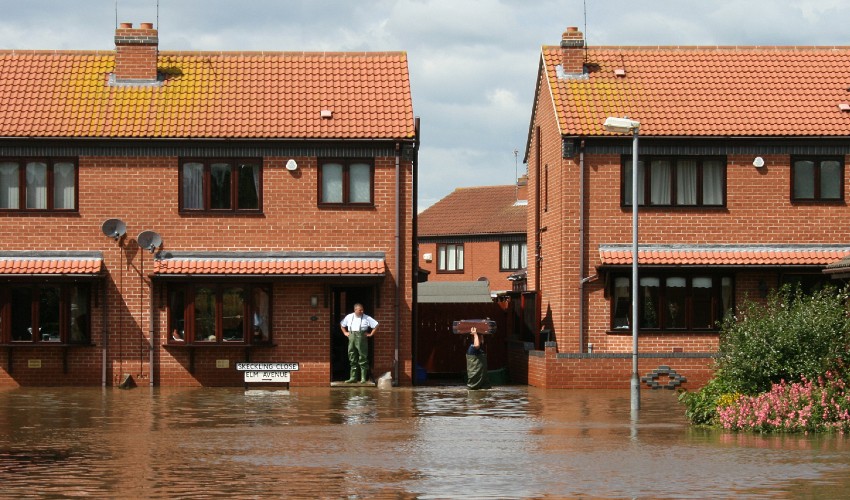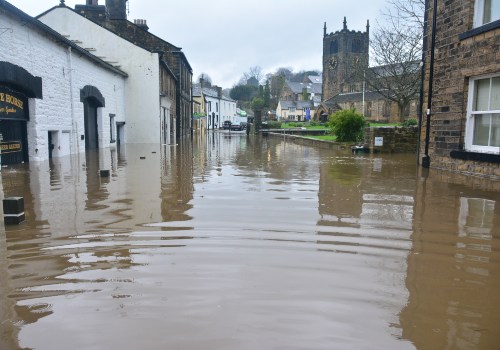What is the flood insurance gap and how is it affected by climate change?
Climate change, driven by human activity, is one of the most significant threats to humanity. It is causing devastating natural disasters such as wildfires, mudslides, droughts, and floods, resulting in enormous financial losses.
According to the annual report from NOAA’s Global Monitoring Lab, the global average atmospheric carbon dioxide reached a record high of 417.06 parts per million in 2022.
While it may seem that climate change’s impacts are distant from our daily lives on our relatively isolated island, this perception is far from accurate. Climate change is affecting flooding in the UK in several ways.
- Increased Moisture: As the atmosphere warms, it can hold more moisture. The accepted estimate is that for every Celsius degree of warming, there is a 7% increase in the atmosphere’s moisture content. This can lead to more intense rainfall events, with potential increases ranging from 5% to 15%. The UK’s Northwest is particularly vulnerable to these changes.
- Increased Variability: Not only will the frequency of heavy rainfall events increase, but their variability will also rise. Extreme rainfall events tend to cluster, with record-breaking events followed by periods without such records. This clustering poses challenges for communities attempting to adapt, as it can catch infrastructure unprepared and result in long-term damage.
The research underscores the importance of meeting carbon emission targets and planning for more frequent and severe rainfall events. As the concentration of CO2 in the atmosphere has risen, economic and insured losses in the UK have also increased.

What is the Flood Protection Gap?
Approximately 80% of catastrophic flood losses worldwide are uninsured, leaving individuals, businesses, and governments exposed to financially ruinous consequences. This problem is worsening, with economic losses reaching an estimated $313 billion in 2022, 4% above the 21st-century average, and insured losses reaching $132 billion, 57% above the 21st-century average. However, these insured losses only covered 42% of the total losses, leaving a substantial 58% “gap” in protection between damage costs and insurance payouts.
What are the factors affecting the Flood Insurance Gap?
Several factors contribute to the widening flood protection gap:
- Insurer Reluctance:
Insurers are becoming increasingly hesitant to offer flood protection in high-risk areas due to the rising risk associated with climate change and recent extreme weather events. - At-Risk Areas:
Areas are considered “at-risk” based on three main factors; Firstly, Hazard. This encompasses the intensity, frequency, depth of floodwaters, and rainfall amounts. Secondly, Exposure. Proximity to rivers and coastlines increases exposure due to higher populations and properties. Thirdly, Vulnerability. Vulnerability measures the susceptibility of people and property to damage, including resilience measures and regulations in place.
As man-made climate change intensifies the frequency and severity of floods, more people, especially vulnerable populations, are affected. Rising costs lead to insurers imposing higher excesses or premiums and sometimes refusing to cover properties in high-risk areas. Consequently, many businesses struggle to secure adequate flood insurance.
The Role of Romero Insurance Brokers and FloodFlash
Flood insurance helps mitigate the financial risks associated with floods. However, as climate-related risks increase, traditional insurers are growing less willing to provide coverage due to the growing uncertainty surrounding flood events. FloodFlash offers a solution to this problem:
- Certainty in Payouts:
FloodFlash clients select a trigger depth and payout amount in advance, reducing uncertainty during the claims process. When the sensor detects water reaching the trigger depth, the claim is automatically settled. - Speed of Payouts:
FloodFlash boasts rapid payouts, with some claims processed in as little as 3 hours and 50 minutes from the onset of the flood. This swift financial assistance can be crucial for businesses facing flood-related challenges.
How FloodFlash Measures Flood Damage
The process of acquiring flood insurance for Romeo Insurance Brokers’ clients only involves a few steps:
- Contact Romero Insurance Broker:
Clients should have a representative who handles their policy. Our handlers can provide more information on your flood insurance, and perhaps make arrangements with FloodFlash. Prospective clients should contact us immediately to get their underinsurance sorted today and become financially protected. - Personalised Quote:
FloodFlash provides a personalised quote based on their depth-to-settlement ratio, allowing adjustments to the trigger depth and settlement figures to match your specific needs. Multiple triggers may be recommended to cover various flood scenarios. - Sensor Installation:
Trained engineers install a sensor at your premises within 14 days. This sensor monitors water levels and triggers the payout process when the agreed-upon trigger depth is reached. - Automatic Settlement:
When the sensor confirms that water has reached the trigger depth, FloodFlash sends the agreed settlement amount in full. This funding can be used by the property owner to address flood-related issues, whether for purchasing stock, managing business interruptions, or repairing damage.
Contact Romero Insurance Brokers about your policy
CAN YOU FLOOD PROOF YOUR BUSINESS?
Whether you’re based in an area known for flooding or not, you should still start preparing for the ‘what ifs’.
Read More



